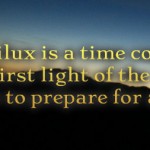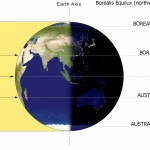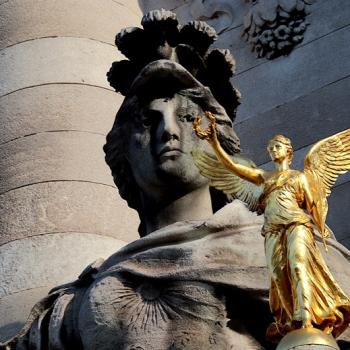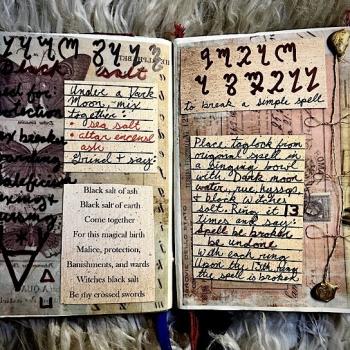I just finished reading Bernd Heinrich’s Life Everlasting: The Animal Way of Death. On one level, it’s an in-depth look at some of the undertakers of nature–burying beetles, vultures, fungi and their ilk. Most of us recognize that when an animal, plant or other living thing dies in the wild, it quickly becomes food for others; the nutrients in its body are cycled back into the system of life and death, eating and excreting. Not surprisingly, numerous creatures evolved to fit niches entailing the consumption and removal of remains of the dead. Some of these are so tightly set into their places, in fact, that the human removal of their particular food source has caused endangerment and even extinction. The white-rumped vulture of southeast Asia, for example, is critically endangered because there are many fewer wild ungulate carcasses to feed on, and we humans eat the cattle and other livestock that took their place. This is further compounded by certain anti-inflammatory drugs used in the cattle; when a vulture is able to get to a cow carcass, certain residual drugs in the flesh have fatal consequences.
And this ties into another layer of this book: interconnection, even across long distances and longer time periods. We are notoriously prone to tunnel vision when it comes to the effects of our species. It’s only really been in the past several decades that we’ve developed widespread awareness of the negative consequences of our actions on the land, sea, sky, and their inhabitants, ourselves included. By looking at just one slice of the world, that of the decay and repurposing of remains, Heinrich is able to startle us back into the realization that what we do does have an impact, often more far-reaching than even our best previous research had shown. As the author states with regards to the white-rumped vultures, “of course nobody thought it necessary to test whether a drug made in America that makes cows well would make vultures in Iran or China or India sick” (p. 92).
But let’s make this even more personal: the disposition of human remains. In the United States, there are essentially two legal means to ultimately place human remains to rest: cremation and burial. Even bodies that are donated to science are ultimately cremated once the medical students or researchers are done with them. And both of these methods are strictly regulated. You can’t simply place a body on a lavishly decorated funeral pyre; instead, the body must be taken to a crematory which operates under very specific regulations, placed in the crematorium and burned. It’s a much more sterile environment than an open space under the sky, and few people stick around to watch their loved ones being turned to the ashes they will later collect in a cardboard box or similarly sterile container. As to burial? You can’t just be left in the woods somewhere to become a part of the trees; instead, your choices are either private property (within certain limits) or designated burial grounds covered with carefully manicured lawns doused in chemical fertilizers and herbicides.
Both of these are starkly divorced from the natural cycles that Heinrich describes for other animal species–and for our prehistoric ancestors as well, along with any later humans who died remotely enough to not be recovered. And both of them have significant negative impacts on the environment. A read through the first chapter of Mark Harris’ Grave Matters: A Journey Through the Modern Funeral Industry to a Natural Way of Burial displays just how eco-unfriendly the standard American burial process really is. The corpse’s veins are pumped full of formaldehyde, which prevents even the tiniest bacterial undertakers from doing their natural job (in fact, the abdomen of the body is punctured and the remaining bacteria are vacuumed out). Then the sterilized, chemical-soaked body is placed into a decay-resistant coffin, and laid into a chamber of concrete and steel that deters even the most determined of worms. Heinrich states that “In the United States alone, the burials in our 22,500 active cemeteries annually eat up 30 million board feet of hardwood lumber, more than 100,000 tons of steel, 1,600 tons of reinforced concrete*, and nearly 1 million gallons of embalming fluid” (p. 195-6). Imagine how many houses could be built with the lumber and concrete, sheltering the living instead of the dead, with the funeral materials of just one year in one country.
Cremation isn’t much better. While it may save space in the earth, Heinrich points out that cremation causes “0.2 percent of the global emissions of dioxins and furans, making it the second-largest source of airborne mercury in Europe”. And he further points out that “The amount of fossil fuel required to cremate the North American crop of bodies each year has been estimated to equal what an automobile would use in more than eighty round trips to the moon” (p. 196). Yes, he said eighty, not eight. One thing he didn’t mention, and which is another primary reason I do not want to be cremated, is that all those nutrients saved up in your body are largely wasted when your remains are burned. You may have spent decades pulling in resources from the food you eat, but cremation robs the land of the return of those resources, with only a few ashy exceptions.
In fact, American culture is so against any alternatives to these two resource-intensive options that “a shallow grave in the woods” is only used when describing the careless disposal of the body of a murder victim. There’s no room here for a carefully planned-out funeral in which the deceased is lovingly placed directly into the welcoming earth, where we aren’t tricked into thinking that the remains will never decay because the dead person has a little bed in a little concrete house in the ground. And while I recognize that this form of artificial burial is meant in part to comfort the living, I find it patently disturbing.
I am decidedly agnostic when it comes to the idea of an afterlife of any sort. If there is one, great! The adventure continues. If there isn’t, though, then I would spend my last moment of awareness horrified if I felt I hadn’t made the most of this life. This includes the responsible disposition of my remains once I’m gone. I have no guarantee that there’s any life other than this one, but I know for sure that what I do in this moment can have reverberations in this world well beyond my own departure. I am not motivated by fear of a horrible punishment after I die. I am motivated by the care of the beings I share this life with right now. And I feel that the best last act I can do for this world is to responsibly return the resources I used to build my body back to their source once I’m done walking around in the flesh.
This is why I am a strong advocate for green burial (and, additionally, home funerals). We are so death-phobic in this culture that we have literally placed the care of our loved ones’ remains in the hands of others. All we get is the post-embalming model of the person who used to be, poked and prodded and vacuumed by a stranger’s hands, and all we can hope is that in the case of an open casket we can say “Oh, s/he looks so natural!” Then it’s into the concrete shaft, and once the bereaved have left the site a backhoe tosses the remaining earth back into place. Or we send the body away to a crematory and get back the box of ashes, with the dirtiest work already done for us. This gives us little incentive to think about the wider impacts of our choices, and indeed a person deep in mourning should not be expected to think about mercury pollution or how many houses are buried in the graveyard.
But that’s why I’m thinking about it now when I am not dying (and, powers that be willing, not about to step outside and get hit by a bus). I have the time and luxury to consider what my last gift to this world will be, whether there’s another one or not. It may be considered morbid by some to even think about death when it’s not an imminent reality. But that “not thinking about it” tendency has gotten us in a lot of trouble as a species. Just as we’ve had to face some uncomfortable truths about the prices for our resources and luxuries, from food to housing to transportation, so I think we also need to be approaching the realities of dying and death in this culture.
And there are movements in that direction. Death Cafes have begun to spring up in cities in Europe and the U.S.; I attended the first one in Portland last year, and I and others found it to be a good opportunity to bring up some difficult topics. Books like Heinrich’s and Harris’ and others not only make us more aware of the nasty behind-the-scenes of modern burial and cremation techniques, but offer up better alternatives that are kinder to both the earth and the body itself. And, slowly but surely, the taboo around death in American culture in particular is disintegrating, so that instead of being discussed only in hushed tones, or splattered across sensationalized horror films, death is beginning to take its place in our cycle of life again.
As for me? Should I shuffle off this mortal coil tomorrow, bury my remains at White Eagle Memorial Preserve Cemetery in Washington state. Don’t give me a coffin; just wrap me in a plain white sheet, secondhand if you can get it. Don’t bury me with mementos and trinkets; let my possessions be cycled back into the world as surely as my remains will go back to the earth. Have a physicist speak at my funeral, read Mary Frye’s Do Not Stand At My Grave and Weep aloud, and let people say the last words they need to say. Celebrate my life afterward if you so choose, if it will help you mourn and heal. And then leave my remains in the ground, where the worms and burrowing insects and fungi can be my undertakers, carefully packaging out the molecules of my form and giving them to other beings in the natural world. I don’t want to be encased in concrete; I want to become trees and foxes and rivers, just as I was once apples and chickens and bright bubbling springs. Make this your last gift to me, so I can make one last gift to the world you still share.
* http://naturalburialground.org/htm/natural_burial.htm says that it’s 1,636,000 tons of concrete, “enough for a 2-lane road between San Francisco and Phoenix!”
















